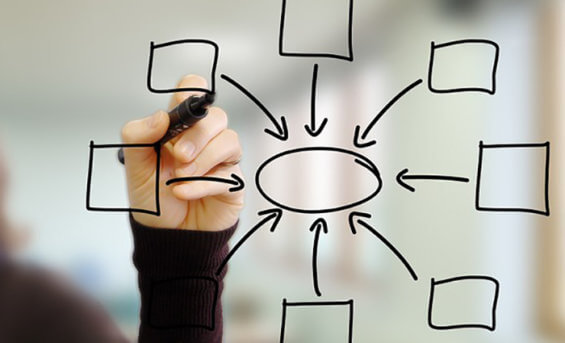EDB taps design thinking to meet local business needs

The Economic Development Board for Tacoma-Pierce County is one year into its 2021-25 work program. But amid the COVID-19 pandemic and challenges of systemic racism and economic hardship, there’s work to be done to ensure its goals and objectives are on track. The organization must be more responsive to local business needs.
“Since the EDB’s work program was created, the organization and the board have evolved. We have new voices and perspectives in the conversation now,” said new EDB Chair Brian Marlow, Keybank South Sound Market President. “We have to go back and once again ask the foundational questions.”
Continuing the conversation
Over the last two years, the EDB and its partners have pivoted to respond to pandemic conditions and systemic racism. Last year, the organization changed its bylaws and board recruitment policy to ensure diverse leadership and filled several board positions to be more representative of the community. It joined with community partners to support Black, Indigenous and People of Color (BIPOC) businesses and increase awareness around issues that affect the broader community. Positive strides were made, but it was just the beginning. Now, the EDB is ready to take the next step with the help of a creative resource at the University of Washington Tacoma.
The Global Innovation and Design (GID) Lab, part of the UW Tacoma Institute for Innovation and Global Engagement, was created in 2018 as a hub for creative problem solving. Using the principles of design thinking, the initiative brings together faculty, community partners and students to develop innovative solutions to real-world challenges. Most notably championed by Stanford University’s d.School, design thinking is inclusive, accessible and a driving force for transformation towards social good.
The process to get us there
The EDB asked the GID Lab team to apply human-centered design to its 2021-25 work program. September to November 2021, the GID Lab team conducted EDB investor interviews, surveys and focus groups to identify the challenges of the pandemic and equity and inclusion. Participants were from across industries and represented BIPOC- and veteran-owned businesses, small-to-midsize companies, and EDB board members and clients.
Next, the Lab team and the EDB’s core design group (Bruce Kendall, Herb Simon, Brian Marlow, Jackie Flowers, Sarah Bonds, Maddie Merton and Deborah Kelly) met virtually to drill into user research and create two design challenges for the EDB Board:.
– How might the EDB elevate a more diverse workforce/talent pipeline to support businesses coming out of the pandemic?
– How might we learn more about the communities we serve?
Finding out what humans need
“Human-centered design emphasizes a bias to action and empathy for the people you are designing for,” said Dr. Divya McMillin, UW Tacoma Associate Vice Chancellor for Innovation and Global Engagement. “The design thinking process is at the heart of this approach. It urges you to be a co-designer with those experiencing the need and results in new solutions that are carefully built to meet their needs.” Think upside-down sauce bottles, flat plugs for electrical outlets, and MRI machines transformed into a theme-park experience to ease the fears of pediatric patients.
The method for getting to those solutions has five stages:
1. Empathy. It’s about people, not about the problem.
2. Define. What’s the issue? What’s the need?
3. Ideate. Assume a beginner’s mindset and shelve conventional thinking to generate ideas.
4. Prototype. Create a model of your great idea.
5. Test. Give your solutions a spin.
During a fast-paced virtual retreat on December 8, EDB board members broke into small teams for back-to-back sessions. Working in a collaborative digital work space, they discussed the initial user research and solutions and brainstormed additional ideas. Then, inspired by group discussion and using simple materials, they created prototypes of their ideas.
Thoughtful creativity abounded. Using clay, pipe cleaners, markers and more from their individual design kits, teams crafted models to eliminate barriers, create partnerships, identify diverse pathways to meaningful jobs, build infrastructure to support the BIPOC community, and more broadly connect the EDB with businesses and organizations.
“There was truly a deepened empathy for each other’s experiences as well as overall member experiences,” McMillin said. “The GID Lab team is honored and privileged to be part of a community that continues to serve in such transformative, collaborative and solution-oriented ways.”
“I’ve never seen so much energy and enthusiasm for the future of Pierce County,” said Immediate Past EDB Chair Herb Simon, Partner with Simon Johnson LLC. “It’s very heartwarming. We will grow a greater community because of these types of discussions.”
Stay tuned
Now, it’s on to Stage 5 in the design-thinking process. The GID Lab team is gathering ideas and solutions from the December design session and will provide a formal report to the EDB to help move prototypes into action. Watch for more about results of this collaborate work in a future issue of Onward.
Read more about the Global Innovation Design Lab here.